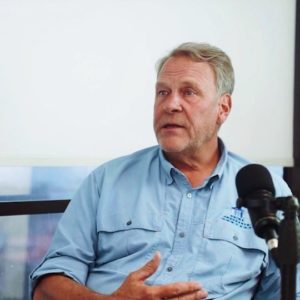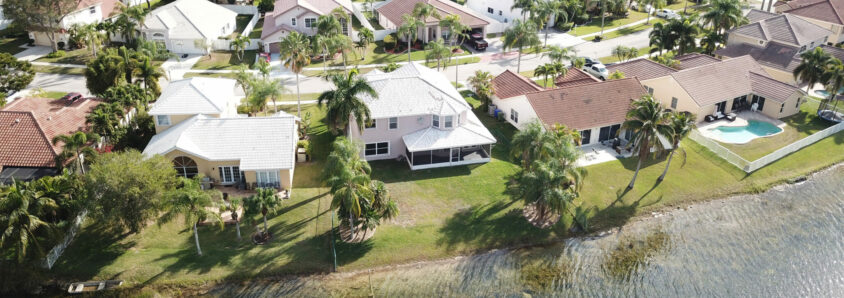Nine home insurance companies have entered liquidation in Florida alone over the past year, leaving homeowners to face unprecedented rates during the pandemic.
Although Florida has received a lot of attention over the past year, the entire nation has faced more and costlier natural disasters over the past four decades.
Florida, Louisiana, and Texas have had the most billion-dollar disasters since 1980 (when adjusted for inflation). This puts a strain on both the people who live in those states and the insurance companies that operate there.
The most expensive disaster in 2021 was Hurricane Ida, which made landfall in Louisiana as a category four hurricane. The storm devastated entire communities and did an estimated $75 billion worth of damage.
Do your clients need non-standard property coverage? If they live in a high-risk area, the answer is a resounding yes.
Let’s look at non-standard property coverage and who it benefits the most.
What is Non-Standard Property Coverage?
Nonstandard property coverage is property coverage for homes/condos/HOAs/mobile homes/commercial buildings not traditionally covered by standard policies. This type of coverage is often necessary for properties considered to be high risk, such as those located in areas prone to natural disasters or used for business purposes.
Nonstandard property coverage can protect the property itself and the contents of the property, and many liabilities that the property owner may face.
While this coverage can cost more than standard coverage, E&S coverage covers perils that others will not. Your clients should consider the value of their property and the risks involved when looking into this option.
- It may involve additional fees depending on the coverage you require and your level of risk. High-risk applicants will pay premiums that reflect this.
- Has more flexibility regarding their acceptance of high-risk applicants.
Who Needs Non-Standard Property Coverage?
Most standard property insurance policies do not cover certain types of risks. For example, most standard policies exclude flood damage. As a result, your clients who live in areas at risk for flooding will need nonstandard property coverage for proper protection.
Other clients who may need nonstandard property coverage include those who own high-value homes, those who have a property exposed to unusual risks (such as earthquakes, wildfires, or hurricanes), and those who have difficulty obtaining coverage from standard insurers.
If you have clients who live in a coastal area or a low-lying geographic area (such as New Orleans), a non-standard option might be the only insurance that they can receive. As mentioned earlier, several insurance companies have dropped homeowners in Florida because of excessive losses. In 2020, the insurance industry lost $1.6 billion in underwriting.
California is also facing issues because of the massive damage caused by wildfires in the state. The western wildfires of 2021 costs the states of California, Colorado, Arizona, Idaho, Oregon, Montana, and Washington $10.9 billion, with California taking the brunt of the financial damage.
-
-
-
- CA HOAs that are essentially desperate because nobody is writing in brush areas.
-
-
There are unseen costs of the wildfires as well, such as evacuation orders costing businesses money in lost sales and food.
250,000 California customers lost their coverage in 2019 alone. This has led to the state issuing one year moratoriums on insurance policy cancellations after major wildfires
As a result, many companies already treading water decided to take drastic actions to keep their companies afloat. Many of those homeowners in Florida and California couldn’t find traditional options.
Companies have and will continue to face tough decisions in areas that experience excessive flooding, wildfires, wind and earthquake damage, and tornados.
The good news is that we write policies that provide effective solutions to your clients even when no one else will. We’ve designed our product lines with these types of customers in mind.
The Difference Between Vacant and Unoccupied
Your clients should also know the difference between “vacant” and “unoccupied” properties, as this can significantly impact the type of insurance they need and the financial cost of coverage.
Vacant means that a home or business is empty of both people and property. It’s a building with no signs of any intention to return. Unoccupied means that the property doesn’t have people in it, but there is personal property there that implies an intention to return.
Vacancy exclusions remove coverage for vandalism, water damage, broken glass, and theft if the damage occurs within 30 to 60 days of the home being vacant. These properties often require non-standard property coverage.
While nonstandard property coverage can be more expensive than standard coverage, knowing that your clients’ homes are properly protected is often worth the extra cost.
What to Consider When Choosing Non-Standard Property Coverage
Your clients will need to evaluate multiple factors before choosing non-standard property coverage. First, they’ll need to consider everything they want to be covered, from their home, personal property, etc. This will help you and the client determine how much coverage they need.
This type of coverage can also be more expensive than standard insurance. Your clients will need to figure out how much coverage they can afford before settling on a policy.
You and your client should also consider how easy it is to file a claim and the insurance company’s history with claim fulfillment.
It’s important to compare plans, especially in areas deemed as high-risk. The property’s location plays an important role in determining the price and type of coverage needed. The value of the property also plays a role.
Those homeowners are often left with no other options. If you have clients in this situation, it’s important to explain all their options while also being honest about the limited number of choices they may have.
Other Property Types
There are other types of properties that may be difficult to find coverage for, such as:
- Condos – Normally requires HO-6 insurance. These properties can cause issues with insurance because the owner doesn’t own the land, building, or property. You own the inside of the dwelling, such as the wiring, cabinets, furniture, appliances, etc). The condo association should have a master insurance policy to cover the building, but you’ll need special insurance to cover what you own. This gets trickier if the building (and your belongings) are in a high-risk area.
- Mobile homes – Insurance companies tend to see mobile homes as being a greater risk to insure because they lack a permanent foundation. Mobile homes may also be set in rural locations, making them more susceptible to natural damage like wind, wildfires, and tornados. Being located on a well and not having fire hydrants nearby also increase risks for insurance companies.
- HOAs – Home Owner Associations also have special challenges that sometimes require non-standard property coverage. Prior claim activity, assessment issues, insolvency exposures, foreclosure rates deemed to high, declining property values, and other issues can cause problems when looking for insurance. Many insurance companies are going insolvent, leaving the HOA’s unable to find coverage. California is especially desperate since nobody is writing in brush areas.
Contact Us Today For a Quote on Non-Standard Property Coverage
Non-standard property coverage is a great way to protect your clients from losses that a standard policy might not cover. As a producer, you can help them determine if this coverage is right for them and their needs. Give your clients the peace of mind that comes with knowing their property is properly protected by working with them to find the right policy.
We have over 40 years of experience working with producers and their clients to find the best insurance solution for all parties involved. We work hard to learn everything about your client so that we can offer a fair and reasonable solution to their needs. To learn more, get in touch with us at 1-800-257-5590 and info@primeis.com, or get a quote from us today!
___________________________________________________________________________________________

Rick J. Lindsey hails from Salt Lake City, Utah. He began working in the mailroom of his father’s Salt Lake City insurance firm, getting his introduction to the business that became his lifelong career. Lindsey quickly rose through the ranks while working in nearly every imaginable insurance industry job. As an entrepreneur, specialty lines underwriter, claims specialist, risk manager, and a licensed surplus lines broker, Rick Lindsey is highly skilled in all levels of leadership and execution. As he progressed on his career path, Rick discovered an urgent need for insurers willing to write policies for high-risk individuals and businesses. He was frequently frustrated that he could not provide the liability protection these entities desperately needed to safeguard their assets. He also formed the belief that insurance companies acted too quickly to settle frivolous claims. Lindsey decided to try a different approach. He started an insurance company and became the newly formed entity’s CEO. This opportunity has enabled Rick to fill a void in the market and provide a valuable service to businesses, individuals, and insurance agents who write high-risk business. Prime Insurance also specializes in helping individuals and businesses who live a lifestyle or participate in activities that make them difficult for traditional carriers to insure. If you’ve been denied, non-renewed, or canceled coverage, don’t give up quite yet. Chances are Prime Insurance can help.


